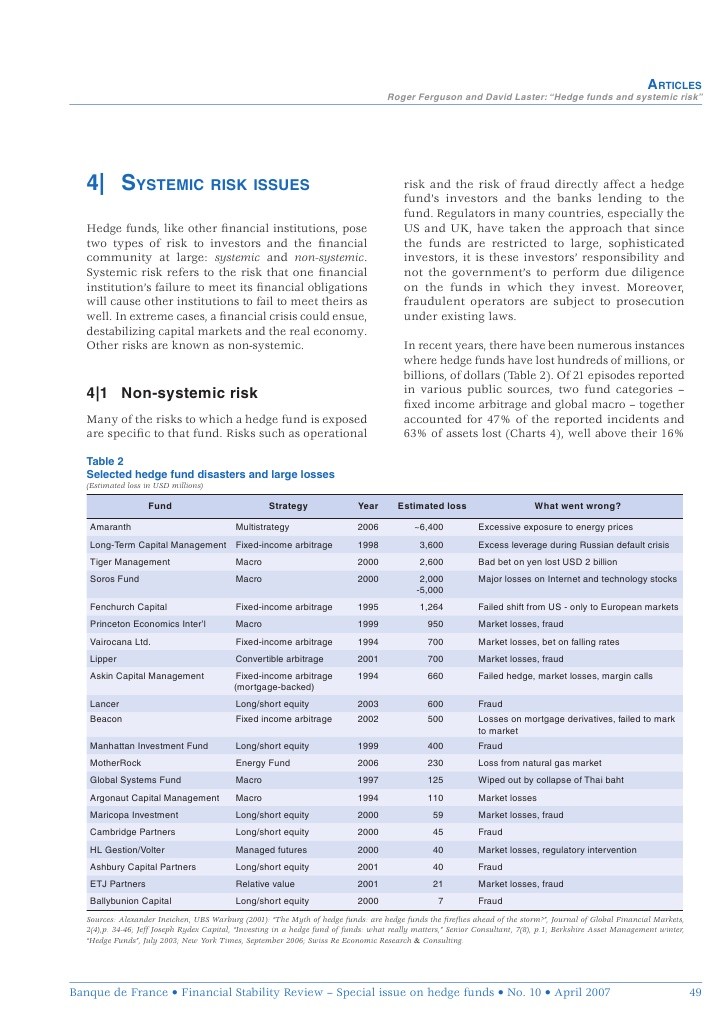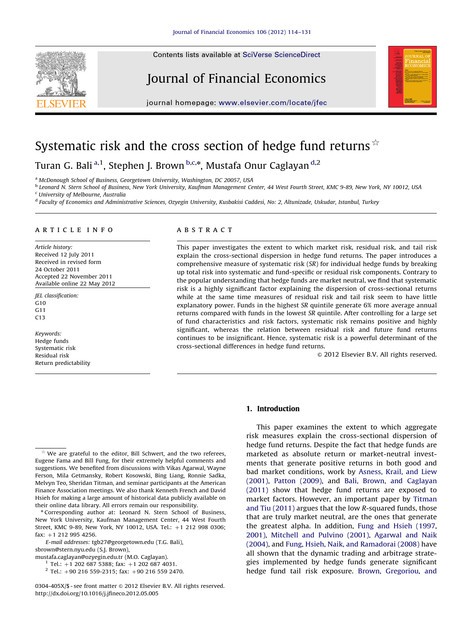Hedging Systematic Risk
Post on: 4 Июль, 2015 No Comment

This post originally appeared in FutureSources Fast Break Newsletter on March 10, 2010, where Craig Turner is a regular contributor on various futures trading topics.
Systematic risk is always a threat to even a well-diversified portfolio. When it comes to trading, we are always aware of systematic risk, and look for ways to hedge it as much as possible.
What exactly is systematic risk? It is the inherent risk of the financial markets crashing like they did in late 2008 and early 2009. It can be caused by interest rate hikes, stock market crashes, a subprime crisis, a country defaulting on its debt (Greece?), or any event that causes massive panic selling.
When a market crashes everything gets sold except for flight to safety investments, and sometimes those are not even safe. When the markets were falling in late 2008, the only assets that appreciated were the USD and Treasuries. Gold, viewed by some as the ultimate safe investment, traded to annual lows into the $600s during the last stock market crash.
So how does someone hedge out systematic risk? While you cant hedge it out completely, there is something very important you can do to insulate yourself as best as possible.
For US markets, hedging out the USD is probably the best way to reduce systematic risk. The USD is not only the United States currency, but it represents the US economy as a whole. If you can reduce your exposure to the US economy, then you can reduce your exposure to systematic risk. Hedging out your USD exposure is hedging your risk to sudden shocks to the US economy.
How do you hedge out the USD? It is easier then you think. For every US market you are long, you should try to find a position that gives you a short position. This is something I always try to do in my Turners Take Newsletter .
For example, lets say you are bullish on Corn and you think it is going to trade to 25 cents higher per bushel. You are not just long Corn. You are also short the USD. Think of your trades as a cross, like the currency pairs. When you are long the EUR, you are really long the EUR and short USD, or just EUR/USD. When you are long Corn you have sold it in USD, which makes a Corn/USD cross.
Why is this important to realize that being long Corn is really a long Corn/short USD cross (Corn/USD)? Lets say there is a panic because Greece defaults on its debt. Not only is the EUR sold heavily, driving the USD up, but a lot of riskier assets are sold during times of great uncertainty. Everyone wants to get into cash and all commodities go down. Corn falls 20 to 30 cents because it is priced in USD, and the dollar is soaring.
Nothing has changed fundamentally in the Corn market except the value of the USD. Corn might still have better bullish conditions than before, but the rise in the USD has made your position a loser!
The good news is you can hedge out this risk if you were short a market in similar size that is priced in USD. Lets say not only were you bullish Corn, but you were bearish on Wheat. Now you have a position that is long Corn (short USD) and short Wheat (long USD). This is what the new positions look like:
1) Corn/USD
2) USD/Wheat
The USD cancels out and you are left with:
1) Corn/Wheat
If the USD rallies strong or declines rapidly, it will most likely affect Corn and Wheat the same. If the dollar rallies strong, the loss in Corn will be mostly offset by the gain in Wheat. This is not a perfect hedge against the USD, but it works often enough that allows traders to stay in positions when events beyond their control take place.
How does your trade ultimately gain/lose in value? By gaining or losing value relative to the two specific commodities. Since we are bullish corn and bearish wheat, we feel that the value of corn will appreciate compared to wheat.
This is not just for fundamental traders. Traders using technical analysis can benefit as well. If corn has a bullish chart and wheat has a bearish chart, then the Corn/Wheat trade makes sense for technical analysis traders.

Yet another approach to the markets that hedges out the USD is seasonal spread trading, like Guy Bower and his ProTrader Digest newsletter. Corn typically out performs Wheat in January as feed (corn) is in high demand for livestock and Wheat tends to stay steady or fall in value. Being long Corn and short Wheat during January and February is not only a good seasonal trade; it is also a way to hedge out the USD.
Fundamental Example
In the examples below, we will cover spread trading that hedges out the USD and Systematic Risk. We will go over how both fundamental and technical traders do this.
Fundamental Traders: Andy Daniels and the Daniels Ag Advisory are currently long July Corn and short Dec Corn. They feel that the corn in storage is too wet to hold, and it needs to be sold into the market before it deteriorates. That is going to put pressure on the July Corn contract, which is known as the old crop.
The DAA is also going to long December Corn, the new crop. The old crop is in storage, and the new crop is in the ground. The old crop, July Corn, will see selling pressure from farmers, while December will not. By being short July and long December we are taking a bearish position in the market, while hedging out the USD risk.
Now, margin on Corn is $1,350 a contract, but for a spread in old crop vs. new crop the margin is not $1,350 X 2 = $2,700. It is reduced to $270 per spread! Why? Because these spreads tend to be less volatile than just being outright long or short a single position in corn. One of the reasons they are less volatile is because you are hedging out outside market risks (systematic risk).
Technical Analysis Example
Cotton recently had a bullish signal to get long around the same time the Sugar charts were turning bearish. In markets that have large price moves, the corrections and daily ranges tend to be bigger than normal. One way to smooth that out is being short one commodity and long another.
As you can see in the above charts, around February 10th Cotton was breaking out to the upside. You could get long Cotton, but if you wanted to hedge out the USD risk you could also have shorted Sugar at the same time. While there is no spread margin reduction for the two contracts, any major changes to the value of the USD would be hedged out.














